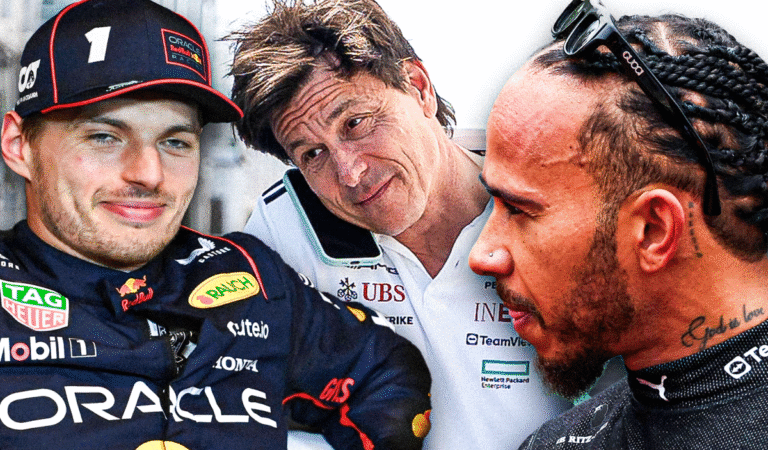PGA Championship Day 2 Fact or Fiction: Tiger Woods Is Becoming Tough to Watch

The SI Golf staff discusses the missed cuts from Jon Rahm and Tiger Woods, and if the PGA of America’s rangefinder policy could do wonders elsewhere in golf.
Tiger Woods missed the cut at the 2024 PGA Championship. / Matt Stone/Courier Journal / USA TODAY
Welcome to the PGA Championship edition of SI Golf’s Fact or Fiction. We’ll be here after every day’s play with a series of statements for writers and editors to declare as “Fact” or “Fiction” along with a brief explanation. Responses may also (occasionally) be “Neutral” since there’s a lot of gray area in golf.
Two triple bogeys in his first four holes Friday doomed Tiger Woods’s chances to make the cut at Valhalla, but . Flashes of the old Tiger are all that matters at this stage of his career.
Pat Forde: FICTION. When the flashes are overshadowed by triples, there isn’t much there to latch onto. It’s more sad than a rush of nostalgia or a jolt of joy. He’s welcome to play as long as he wants—that’s a personal decision—but it’s a bit depressing to watch him in this state.
Bob Harig: FICTION. By flashes of the old Tiger, fans would like to see him shoot some good scores and perhaps even thrill with a back-nine close call on Sunday. Nobody wants to see him struggle to walk 18, which has been the problem at consecutive majors. Woods has earned the right to do this as long as he wants, and his pride suggests he will do all he can to be ready for Pinehurst next month, but it’s tough to see the struggles.
John Pluym: FACT. All of Tiger’s back injuries as well as the damage caused to his lower leg in his automobile accident make it next to impossible for him to practice, let alone compete. Still, having him on the golf course is a thrill for those in person at tournaments as well as fans watching from home. He had back-to-back birdies during the second round showing us what he used to do on a regular basis. So let’s enjoy the flashes of great play while we still can.
Jeff Ritter: FICTION. I’m with Bob and Pat on this. I don’t expect Woods to seriously contend in a major ever again, much less win one, but seeing him so diminished is becoming a drag. His car accident was three years ago — how much healthier can he possibly get?
John Schwarb: FICTION. Tiger’s short game did him in this week, and next he’ll go to Pinehurst No. 2 which is a really bad place to be loose around the greens. I love the highlights, but the bottom lines are getting increasingly tougher to take.
Jon Rahm’s unusual week began when he said he’s still a PGA Tour member, supports the Tour and “I don’t feel like I’m on the other side, I’m just not playing there.” He then missed the cut after a T45 at the Masters. Money aside, he’s regretting his decision to go to LIV Golf.
Pat Forde: FICTION. He certainly didn’t enjoy his Valhalla visit, but I don’t think he’s probably feeling much remorse going to LIV. And if he is, just check the bank account. The checks look good when they land.
Bob Harig: FICTION. This is golf, no matter where he plays. There are going to be some tough weeks and tough stretches and he’s going through one right now. We’ll see if he can get it back together next month at the U.S. Open.
John Pluym: FICTION. Rahm knew exactly what he was doing when he moved to LIV in December for a reported $350 million. Does throwing golf clubs during a major tournament make him regret his decision? Not likely. But it sure is embarrassing. And his game definitely looks like it has fallen off since he started competing in 54-hole tournaments. Rahm went for the bag, and now he has to live with his decision.
Jeff Ritter: FACT. I took Rahm’s words about the PGA Tour this week as a signal he still really believes he’s part of it, delusional as that may be. He’s cashing in on LIV, but in the past six months his legacy arrow is pointing straight down.
John Schwarb: FACT. The key words are “money aside” so, yeah, I think he’s got buyer’s remorse to the tune of hundreds of millions. There’s just a competitive fire that needs more than four weeks a year to burn and LIV isn’t it, and he knows it.
Pat Forde: FICTION. The tour already has plenty of those and doesn’t need another pitch-and-putt pushover. Valhalla has never been that hard, and the rain softened it up to make it defenseless. If the winner ends up 20-under or more, it won’t be regarded as an elite test of golf. Most folks like to see some suffering from the top players in majors, or at least a balance of rigor and opportunity. So far this tourney is lacking in rigor.
Bob Harig: FICTION. Once again, not even immense length can keep the world’s best from annihilating a course when it’s soft. And Valhalla is soft. That’s nobody’s fault. It is a shame there are not firm and fast conditions like there were at the Masters, when Augusta National offered a supreme test. The best hope not is simply an exciting weekend. If that happens, everyone will forget the low scores.
John Pluym: FICTION. A major championship is supposed to test the best players in golf, and they all should have fast greens, thick rough and narrow fairways. Do we really want the PGA Championship winner posting a score at more than 20-under? After all, this isn’t the Travelers Championship in Hartford, which Keegan Bradley won last year at 23 under.
Jeff Ritter: FICTION. The PGA’s identity comes — partly — from its distinct trophy and the inclusion of the club pros. But the best golf tournaments feature setups where players can make quick, dramatic moves both up and down the leaderboard, rather than just going low as fast as possible.
John Schwarb: NEUTRAL. Conditions dictate so much at majors but of course can’t be predicted, and Valhalla is very gettable right now hence the scores. But the PGA in is a constant battle for identity as the No. 4 major and generally I think letting players fire away isn’t a bad thing.
Rangefinders and GPS devices can be used by players in competition this week, a rule the PGA of America implemented in 2021. The PGA Tour and LPGA should follow suit to try to solve its slow play problem.
Pat Forde: FACT. Anything that can be done that reasonably speeds up play, I’m in favor of. That includes eliminating the increased dawdling over putts with “aim pointing.” Five-hour rounds are a drag.
Bob Harig: FICTION. It looks awful. Players and caddies can use them during practice to figure things out. Those who do their homework should be rewarded. Those devices are meant for us hackers who are too lazy to walk off a yardage or to help us save time. They don’t save out time out here.
John Pluym: FACT. Anything that speeds up play would be good for the game, but I don’t know if GPS devices accomplish that goal. However, I do like what MLB has done with the pitch clock. Golf could use a “shot clock” and a “putt clock.” And practice rounds before the actual tournament should help eliminate all of the discussion between player and caddy during the four rounds anyway.
Jeff Ritter: NEUTRAL. Do we have data showing the rangefinders save time? If so, I’m in. If not, leave them for us duffers while the pros and caddies continue to do their homework.
John Schwarb: FACT. Rangefinders aren’t a magic elixir fix as golf’s fidgety players will still take their sweet time over the ball, but it removes one variable that can take some time and that’s where the tours need to start fixing slow play—by nibbling around the edges.
Jeff Ritter is the Managing Director of SI Golf. He spent more than a decade at Sports Illustrated and Golf Magazine, and in 2020 joined Morning Read to help spark its growth and eventual acquisition by Sports Illustrated in 2022. He’s a member of the Golf Writers’ Association of America (GWAA) and has covered more than 25 major championships. He helped launch SI Golf Plus Digital, Golf Magazine’s first original, weekly e-magazine, and served as its top editor. He also launched Golf’s “Films” division, the magazine’s first long-form video storytelling franchise, and his debut documentary received an Edward R. Murrow Award for sports reporting. His writing has earned first-place awards from the Society of American Travel Writers, the MIN Magazine Awards, and the Golf Writers Association of America, among others. He received a bachelor’s degree from the University of Michigan and a master’s from the Medill School of Journalism at Northwestern University. A native Michigander, he remains a diehard Wolverine fan and will defend Jim Harbaugh until the bitter end.
Bob Harig is a senior writer covering golf for Sports Illustrated. He has more than 25 years experience on the beat, including 15 at ESPN. Harig is a regular guest on Sirius XM PGA Tour Radio and has written two books, “DRIVE: The Lasting Legacy of Tiger Woods” and “Tiger and Phil: Golf’s Most Fascinating Rivalry.” He graduated from Indiana University where he earned an Evans Scholarship, named in honor of the great amateur golfer Charles (Chick) Evans Jr. Harig, a former president of the Golf Writers Association of America, lives in Clearwater, Fla.
John Schwarb is the senior golf editor for Sports Illustrated whose career has spanned more than 25 years covering sports. He’s been featured on ESPN.com, PGATour.com, The Golfers Journal and Tampa Bay Times. He’s also the author of The Little 500: The Story of the World’s Greatest College Weekend. A member of the Golf Writers Association of America, John is based in Indianapolis.
John Pluym is the managing editor for NFL and golf content at Sports Illustrated. A sports history buff, he previously spent 10 years at ESPN overseeing NFL coverage. John has won several awards throughout his career, including from the Society of News Design and Associated Press Sports Editors. As a native Minnesotan, he enjoys spending time on his boat and playing golf.
Pat Forde is a senior writer for of the Football Writers Association of America, he lives in Louisville with his wife. They have three children, all of whom were collegiate swimmers.
‘

